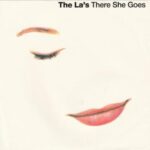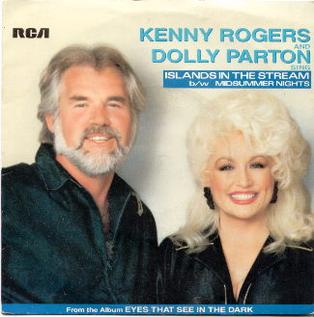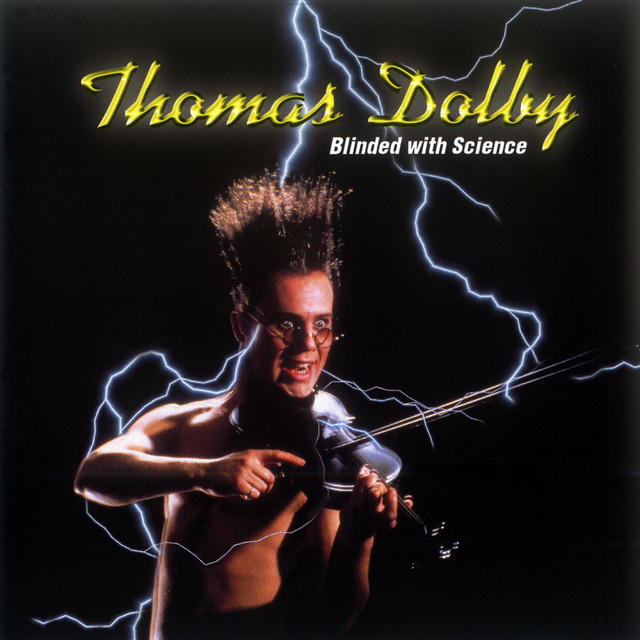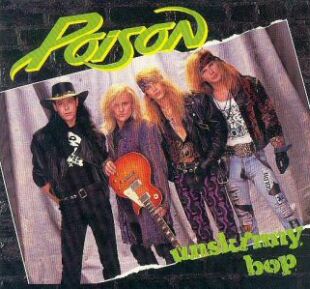 When The La’s released There She Goes in 1988, it seemed almost impossibly simple. A three-minute swirl of jangly guitars, pristine harmonies, and irresistible rhythm, it was the kind of song that arrived fully formed, as if it had existed somewhere in the air before anyone bothered to record it. But beneath its breezy surface, There She Goes carries a subtle emotional weight that has allowed it to endure for decades, earning its place as one of the most iconic songs of the late ‘80s and a defining statement for a band whose legend has only grown in the years since.
When The La’s released There She Goes in 1988, it seemed almost impossibly simple. A three-minute swirl of jangly guitars, pristine harmonies, and irresistible rhythm, it was the kind of song that arrived fully formed, as if it had existed somewhere in the air before anyone bothered to record it. But beneath its breezy surface, There She Goes carries a subtle emotional weight that has allowed it to endure for decades, earning its place as one of the most iconic songs of the late ‘80s and a defining statement for a band whose legend has only grown in the years since.
From the opening guitar riff, the song announces itself with understated confidence. There’s no grand overture, no dramatic buildup — just the clear, ringing chord progression that will embed itself in the listener’s memory from the first few notes. Lee Mavers’ voice, both tender and wistful, carries the melody like a thread through the song’s bright tapestry, striking a balance between innocence and longing. It’s this blend of simplicity and emotional resonance that makes the track feel timeless.
The Anatomy of an Instant Classic
At its core, There She Goes is deceptively uncomplicated. Clocking in at just under three minutes, the song follows a traditional verse-chorus structure, but what sets it apart is the precision of its execution. Every guitar strum, every drum hit, every vocal flourish feels deliberate. There is no excess, no filler — only the purest expression of a singular idea.
The guitars, crisp and shimmering, are a perfect counterpoint to Mavers’ vocals. They dance around the melody, sometimes playing in unison, sometimes in harmony, and sometimes simply filling the spaces with a ringing echo that suggests both joy and melancholy. The rhythm section is equally impeccable. The drums and bass lock in a steady groove, giving the track forward momentum while leaving room for the guitars to breathe. There’s a propulsive energy to the song that feels effortless — the kind of effortless that actually requires immense skill to achieve.
Mavers’ vocals deserve special attention. There’s a certain fragility to his voice, a sense that he’s both holding back and letting go simultaneously. It’s intimate without being confessional, personal without being self-indulgent. His delivery on the chorus — the repeated, almost hypnotic, “There she goes” — has an incantatory quality, as if the singer is both observing and participating in a moment of fleeting beauty. That duality is one of the song’s greatest strengths: it invites listeners into its world while allowing them to project their own experiences onto it.
Lyrical Simplicity, Emotional Depth
At first glance, the lyrics of There She Goes appear straightforward, almost minimalistic: a meditation on a person, presumably a love interest, moving through the world with effortless charm and allure. But there is a universality in this simplicity. The song captures the feeling of yearning, the bittersweet thrill of desire, and the ephemeral nature of beauty.
Lines like “She’s like a vision, she’s like a dream” evoke a sense of awe, of admiration from afar, while the repetitive chorus mimics the cyclical nature of infatuation — that obsessive focus that can consume the mind and heart. It’s a song about longing, yes, but it’s also about fleeting moments of perfection, the small, ordinary instances that linger in memory long after they’ve passed. There is no need for elaborate metaphors or intricate wordplay; Mavers’ straightforward approach is what gives the song its emotional punch.
The ambiguity of the song’s subject adds to its mystique. Is it romantic love, the ache of unrequited longing, or perhaps an ode to the allure of someone unattainable? The answer is never explicitly stated, and that’s the point. Listeners can inhabit the song from their own perspective, making it feel intensely personal while remaining universally relatable.
Production That Feels Alive
The production on There She Goes contributes as much to its charm as the songwriting itself. Originally produced by Steve Lillywhite, the song has a clean, bright sound that emphasizes clarity and immediacy. Unlike many tracks from the late 1980s, it doesn’t rely on heavy reverb or studio effects; instead, the instruments are given space to breathe, creating a sound that feels organic, almost live.
There is an intimacy to the production that enhances the emotional content of the song. You can hear the slight tremble in Mavers’ voice, the subtle variations in guitar strumming, and the interplay between the instruments in a way that makes the listener feel present in the recording space. It’s a meticulous approach that rewards repeated listening, revealing new textures and details each time.
Interestingly, the song’s relative brevity only enhances its impact. Every element serves a purpose, and the listener is left wanting more — a clever illusion of abundance created through precision and restraint. The brevity reinforces the sense of fleeting beauty inherent in the lyrics, mirroring the transitory nature of the subject the song celebrates.
The La’s: One-Hit Wonders or Timeless Artists?
There She Goes is often cited as The La’s defining track, and for many listeners, it was the introduction to the band. Despite their limited discography — the band released only one studio album in 1990 — the song’s cultural resonance far exceeds its quantity. It has become an emblem of British indie pop, a touchstone for later generations of musicians influenced by jangly guitars, melodic clarity, and understated emotional power.
The band’s mythos adds to the song’s allure. Lee Mavers, famously exacting and reclusive, became a figure of legend in the music world. Stories of endless studio sessions, perfectionism, and elusive recordings have become almost as legendary as the song itself. This air of mystique only amplifies the impact of There She Goes. It’s as if the song is a rare glimpse into a creative universe that almost never shared its treasures with the world.
Despite the band’s lack of subsequent commercial hits, the song has proven remarkably resilient. It continues to appear in film, television, and advertisements, and it has been covered and celebrated by countless artists. Its simplicity and clarity make it adaptable without diluting its essence, a rare achievement in pop music.
Cultural Resonance and Influence
Over the decades, There She Goes has retained a remarkable relevance. Its influence can be traced through the British indie scene of the 1990s, from bands like Oasis and Blur to the more contemporary jangly pop acts who cite The La’s as a touchstone. The song’s combination of melodic brilliance, emotional resonance, and sonic clarity has become a template for a type of pop that prizes craft over spectacle.
Moreover, its crossover appeal helped bridge gaps between genres and audiences. The song was embraced by indie rock enthusiasts, mainstream pop listeners, and even college radio circuits in the United States. Its universal themes — desire, admiration, and fleeting beauty — transcend musical categories, making it a song that continues to resonate across generations.
The song’s simplicity also lends itself to reinterpretation. Acoustic covers, orchestral arrangements, and even dance remixes have all managed to preserve the song’s emotional core, proving that There She Goes is more than a product of its era — it’s a living piece of musical architecture.
The Emotional Pull
What sets There She Goes apart from other hits of its time is the balance between buoyancy and melancholy. The track feels like a sunlit walk through a park — bright, energetic, and inviting — yet there’s a subtle undercurrent of longing that prevents it from ever feeling trivial. It’s a rare feat in pop music: to create something simultaneously catchy, emotionally rich, and timeless.
Listeners often describe the song as both joyful and wistful, a duality that resonates deeply. The guitar riffs and harmonies evoke the rush of infatuation, while Mavers’ vocals hint at the inevitability of distance, loss, or unfulfilled desire. It’s a snapshot of a feeling — a fleeting moment of perfection — captured in three minutes of pure pop alchemy.
Timelessness in Simplicity
In retrospect, the enduring appeal of There She Goes lies in its restraint. It doesn’t rely on gimmicks, overproduction, or exaggerated theatrics. Every element is intentional, every note carefully placed. The song achieves its emotional resonance through craft, not spectacle.
The brilliance of The La’s, distilled in this single track, is their ability to create complexity from apparent simplicity. The song feels spontaneous and effortless, yet it is meticulously structured to maximize impact. The result is a work that feels both immediate and eternal, a rare quality in popular music.
It’s also worth noting that the song has aged gracefully. Unlike many tracks from the late 1980s, it doesn’t feel tied to a specific production trend or dated aesthetic. Its jangly guitars, tight rhythm section, and heartfelt vocals remain as compelling today as they were over three decades ago. That timelessness is the hallmark of a truly great pop song.
Closing Thoughts
There She Goes is more than just a single; it’s a masterclass in emotional precision, melodic clarity, and timeless pop craftsmanship. It captures a fleeting feeling — the rush of desire, the ache of admiration, the bittersweet thrill of beauty passing — and renders it universally relatable. Lee Mavers and The La’s managed to take three minutes of music and imbue it with a sense of eternity, creating a song that resonates across generations, cultures, and moods.
It’s easy to hear There She Goes and assume that such perfection is inevitable, that its charm is effortless. But as anyone familiar with The La’s mythos knows, this song is the result of meticulous care, attention, and artistic vision. Its enduring legacy is proof that simplicity, honesty, and precision can create a cultural touchstone capable of outlasting decades, trends, and even the band that created it.
Thirty-five years after its release, There She Goes continues to inspire, enchant, and move listeners. It stands as a testament to the power of pop music to capture fleeting emotion, transform it into art, and make it eternal. Whether heard on a college radio station in the late 1980s, a Spotify playlist today, or performed live by an indie band on a small stage, the song retains its magic. Its beauty lies not in extravagance, but in its unassuming perfection — a simple chord progression, a voice full of longing, and a truth that resonates across time.


